Complex, troubled and troubling: Paloma Varga Weisz's hand-carved beasts arrive at Sadie Coles HQ
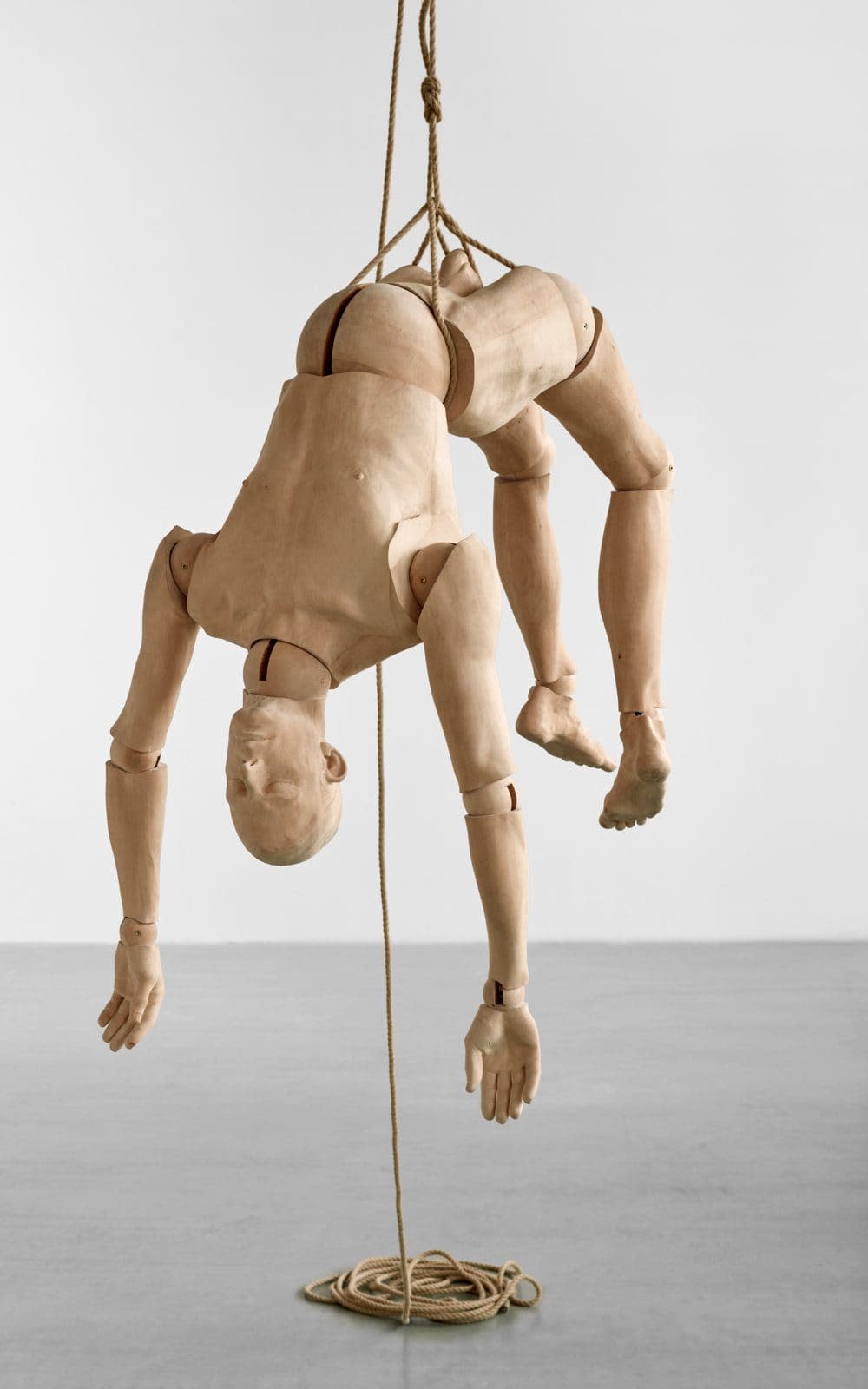
Today’s contemporary artists rarely have extensive training in artisanal craft skills. Those who make their own ceramics, textiles or carvings either tend to embrace an amateurish wonkiness or, if they feel the need for a more finely-wrought realisation of their visions, usually call upon the relevant specialists to do the honours.
Even Grayson Perry, that doyen(ne) of all things crafty has never learned how to throw a pot and gets his tapestries machine-made. All of which makes the German artist Paloma Varga Weisz, who trained for three years in the Bavarian Alps in a special school for professional wood-carvers, all the more unusual.
“I joined this woodcarving school by accident because I didn't get a place at the art academy,” she says. “So I learned this technique and I didn't really know what to do with it.”
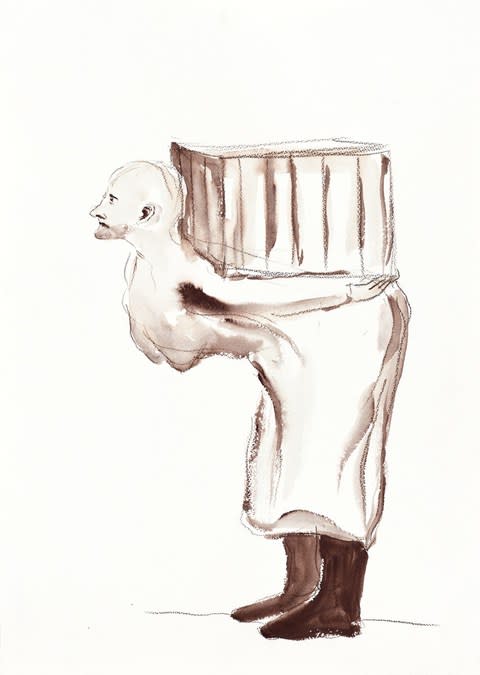
It was only after being accepted the second time around to the Dusseldorf art academy and having exhausted all the standard activities for a radical young artist in the early Nineties (“clubbing, student politics, making videos”) that Varga Weisz again picked up her carving tools.
“I had a little stick and I created a small creature. Suddenly it was the birth of this language: taking the chisel as a pen, I knew how to write and what to write.”
Since then, Varga Weisz has embraced her chisels – as well working in ceramics and using other media such as fabric and even basket work. She now has an international reputation for her haunting, richly associative figurative sculpture.

The often bizarre bestiary that currently populates Sadie Coles HQ were all made by the artist herself from limewood, the classic carving material of the Middle Ages. There’s a distinct and deliberately medieval spirit to the small wooden figures with their simplified features and the various heraldic-style animals that all stand on shelf-like wooden plinths jutting from the walls.
They also display a playfully Gothic grotesquerie: one figure sprouts two rows of teat-like breasts, while another has a second head growing out of the top of the first. Then there’s the small ‘Bumpman’ who is just that, with a skin exploding with revolting, polychrome-painted polyps.
The animals also have some surprising traits: a dog stands on its hind legs to display an erect penis of disquietingly human dimensions, a crouching monkey mysteriously cradles a perfect white egg, and a reindeer stands, heraldic, on its hind legs, but faces the wall.
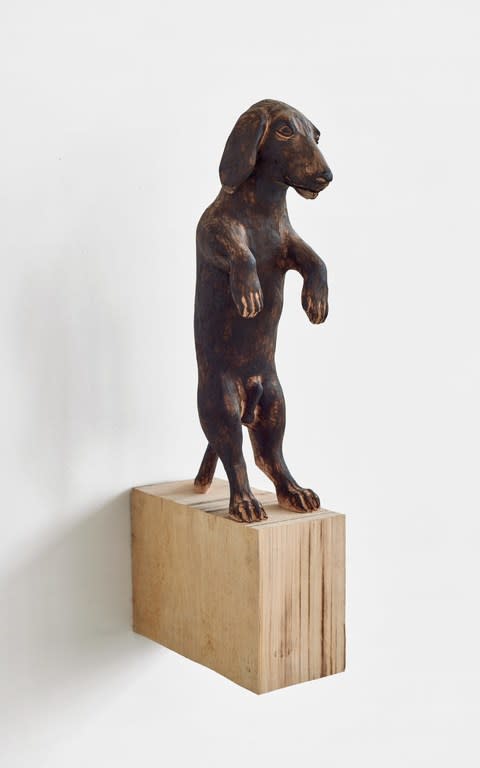
While they have close associations with traditional wood carvings, there’s also a very contemporary individuality to these creatures, and strong sense of back stories waiting to be told.
The forlorn floppy-eared demeanour of the priapic hound; the agonizingly real grimace of the ‘Head on Head’ as it forces itself, Alien-style, up out of its host cranium, or the mournful look of the ‘Bumpman’ – none of these belong around the door of any cathedral or in any medieval Book of Hours.
Any whiff of nostalgia is further blown away by the centerpiece of the show, a life-sized, articulated wooden figure that dangles in the middle of the gallery from a rope hitched around his – and it is emphatically his – pelvis.
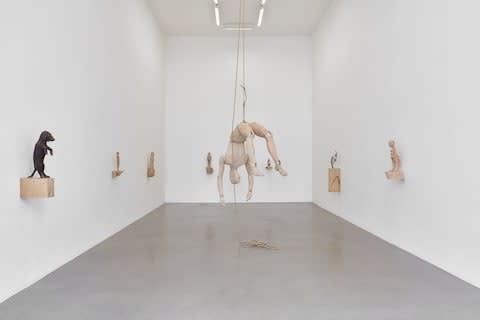
As well as referencing to the wooden figures with their jointed limbs that have been used by artists since time immemorial as a substitute for the human form, this suspended mannequin also taps into the surrealists’ dark fascination with mannequins, from the eerie metaphysical fantasies of Giorgio de Chirico to the creepy dolls of Hans Bellmer.
The fact that the figure’s pose is based on a news photograph discovered by Varga Weisz of a 1930s mountaineer who had fallen to his death in the Swiss Alps makes it all the more disquieting.
She may be using time-honoured techniques, but Varga Weisz’s work is richly steeped in memories from all eras, including the present. Her animals and humans are complex, troubled and troubling.
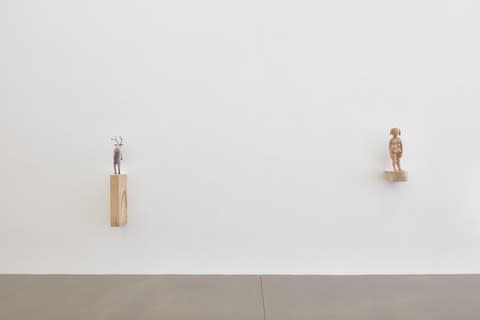
Unlike Jeff Koons’ perfect, hand-carved (not by him) wooden facsimiles of mass-produced ornaments, these figures are never inert but bristle with suggestive associations, even when their features are stylized or smoothly generalized. And don’t make any references to fairy tales or folklore.
“I hate the words ‘mystic’ or ‘fairy tales’, or church language because it doesn’t come from that,” Varga Weisz stressed in a recent interview. “It comes from a completely different angle, from life and from things I see now, from newspapers, images, hardcore sex, porno websites or whatever – not from a bubble of fairy tales or praying in a corner.
“I am open to many possibilities and do not want to be told how to look at, or understand the world. Making my work is a huge journey and at the beginning I have no idea how it ends up.”
Paloma Varga Weisz: Wild Bunch is at Sadie Coles HQ until 18 August. 1 Davies St, London W1K 3DB; sadiecoles.com